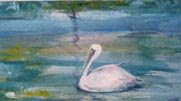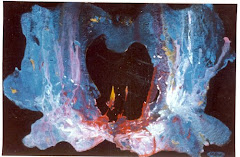You can learn to draw well by drawing. Be wise -- plan on drawing at least an hour a day and take your pencil and drawing pad with you wherever you go.

Notice the activity in the illustration above -- it is artists I worked with as we turned a derelict building into workspaces.
You will find it stimulating to get together with other artists by joining art clubs, painting outdoors with friends or finding studio space. If you are homebound, set up work-space, no matter how small in order to have the materials you work with ready at all times. Before I had a studio, I took a corner of the living room to work and I have seen an artist make a workspace (she called it her studio) in a small closet, even though she had to sit outside the door to work.

Don’t tell me you don’t have room. While I was living in a boat I kept my artist’s materials in a box that had an easel. I had to prepare for an art show so I confiscated the bow room to store my oil paintings until they dried. Later, in a smaller boat, I turned to painting with watercolors, and since they are done on paper I was able to store my paintings under the mattress.
Answer: “Thank you for asking Gj. I did the paintings in the different genres over many years. I started studying fine art in 1954. Before then I worked at commercial art. Yes, I’m now very old -- 93 to be exact --well, young old.”
~~~
Keep up the good work.
~~~













No comments:
Post a Comment